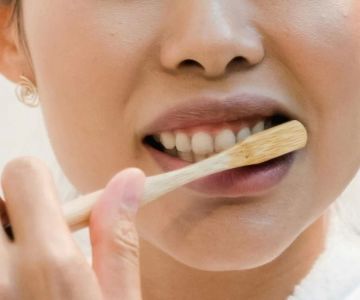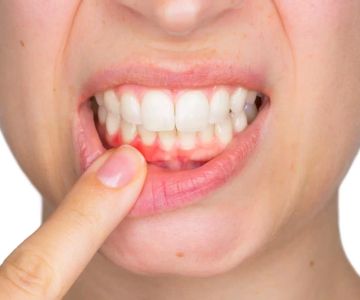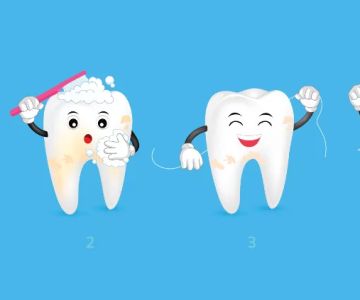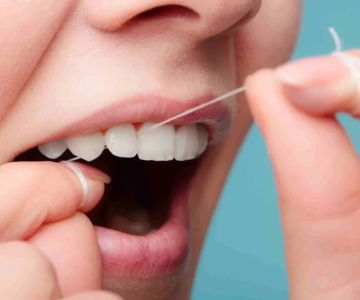The Importance of Brushing Your Tongue for Better Oral Health
- 1. Why Brush Your Tongue?
- 2. Key Benefits of Tongue Brushing
- 3. How to Properly Brush Your Tongue
- 4. Tools for Effective Tongue Cleaning
- 5. Final Thoughts on Tongue Cleaning
1. Why Brush Your Tongue?
Many people forget about the tongue when brushing their teeth. However, the tongue is a breeding ground for bacteria that can contribute to bad breath, plaque buildup, and even more serious oral health issues. The surface of the tongue is covered with tiny bumps called papillae, which can trap food particles, bacteria, and dead cells. If not properly cleaned, these particles can cause bad breath and a decrease in taste sensitivity. Regular tongue brushing helps to remove these debris and keeps your mouth feeling fresh and clean.
2. Key Benefits of Tongue Brushing
There are several key benefits to brushing your tongue regularly:
- Prevention of Bad Breath: A significant cause of bad breath, also known as halitosis, is the buildup of bacteria on the tongue. By brushing your tongue, you can reduce the number of bacteria and help maintain fresher breath.
- Improved Taste Sensitivity: When your tongue is coated with bacteria and debris, it can dull your sense of taste. Brushing your tongue regularly can improve your ability to taste food and beverages.
- Better Oral Hygiene: Brushing your tongue as part of your daily routine helps to maintain overall oral health. It contributes to cleaner teeth, gums, and fresher breath.
- Prevention of Oral Infections: Regular tongue cleaning can help prevent the growth of harmful bacteria that could lead to oral infections or inflammation of the gums.
3. How to Properly Brush Your Tongue
Brushing your tongue is a simple yet important part of your oral hygiene routine. Here’s how to do it correctly:
- Use a Soft-Bristled Toothbrush or Tongue Scraper: Choose a soft toothbrush with a tongue-cleaning feature or a dedicated tongue scraper. These tools are specifically designed to reach the surface of the tongue without damaging it.
- Start from the Back: Begin at the back of the tongue and gently work your way forward. Be sure to apply gentle pressure to avoid irritation.
- Rinse and Repeat: After brushing or scraping, rinse your mouth with water or mouthwash to remove the loosened bacteria and debris. Repeat this process as part of your daily oral hygiene routine, preferably in the morning.
4. Tools for Effective Tongue Cleaning
There are several tools available for cleaning your tongue. Some of the most effective options include:
- Tongue Scrapers: These are specially designed tools that scrape the surface of the tongue to remove debris. Many tongue scrapers are made from stainless steel, plastic, or copper and are very easy to use.
- Soft-Bristled Toothbrushes: Some toothbrushes come with a built-in tongue cleaner on the back of the brush head. These are convenient and effective for cleaning the tongue along with your teeth.
- Mouthwash: After brushing or scraping your tongue, using an antibacterial mouthwash can help kill remaining bacteria and freshen your breath.
5. Final Thoughts on Tongue Cleaning
Brushing your tongue is an essential part of maintaining good oral hygiene. It not only helps to prevent bad breath but also contributes to overall oral health by removing harmful bacteria and improving your taste sensitivity. Whether you use a tongue scraper or a toothbrush, make sure to incorporate tongue cleaning into your daily routine for a cleaner, fresher mouth. To learn more about tongue cleaning tools and techniques, visit Dentistry Toothtruth for expert advice and top-quality oral care products.







 Westgate Dental Arts3.0 (2 review)
Westgate Dental Arts3.0 (2 review) Coventry Family Dental4.0 (247 review)
Coventry Family Dental4.0 (247 review) Familia Dental3.0 (1028 review)
Familia Dental3.0 (1028 review) Dr. Daniel S. Fife, DDS4.0 (31 review)
Dr. Daniel S. Fife, DDS4.0 (31 review) Dentistry At Suburban Square: Michael I. Wollock, DMD4.0 (1228 review)
Dentistry At Suburban Square: Michael I. Wollock, DMD4.0 (1228 review) Comfort Care Dental4.0 (1156 review)
Comfort Care Dental4.0 (1156 review) The Importance of Oral Health Education During Pregnancy for a Healthy Pregnancy
The Importance of Oral Health Education During Pregnancy for a Healthy Pregnancy Why Skipping Dental Checkups Can Lead to Bigger Oral Health Problems
Why Skipping Dental Checkups Can Lead to Bigger Oral Health Problems Best Tips for Brushing Your Teeth Properly for Healthy Gums: Essential Techniques for Oral Health
Best Tips for Brushing Your Teeth Properly for Healthy Gums: Essential Techniques for Oral Health Advantages of Porcelain Dental Restorations
Advantages of Porcelain Dental Restorations How Can Diabetes Cause Tooth and Gum Problems? Preventing and Managing Oral Health Issues
How Can Diabetes Cause Tooth and Gum Problems? Preventing and Managing Oral Health Issues Healthy Habits for Promoting Good Oral Health and Hygiene: Tips for a Healthy Smile
Healthy Habits for Promoting Good Oral Health and Hygiene: Tips for a Healthy Smile